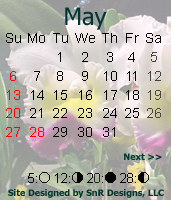



















|

Gardening | Landscaping
| Swimming Pools
Welcome to Ahwatukee Landscaping
Landscaping with Succulents
Although we tend to think of succulents only growing in the desert they can come from sunny and dry places to damp and cloudy.
Succulents consist of plants which are fleshy with water storing leaves. This enables these plants to live in very warm, low-humidity locations.
Most succulents fall into only one of three groups. Sempervivum, Echeveria or Sedum. Sempervivum and Echeveria species form neat clusters of leaves, while
Sedum tend to tumble along the ground or grow upright. Flowers appear in spring and summer and vary in display types and
length of show.
Succulents are extremely east to grow, indoors or out. It is very difficult to kill them, but the surest way is through over watering.
Water sparingly through the winter months when leaves show signs of shriveling. In the summer, water more frequently, especially if
you set the pots outdoors.
Planting
Plant in a mixture of half enriched potting soil and half sand for good drainage. The roots don't grow very deep, so shallow
containers work great. You may want to add polished stones, river rock or sand over the top of the soil. During the winter months,
plant in the most available light spot of the house. In summer (inside and outdoors) plant where they will receive bright,
indirect light. Glaring can dilute the leave color.
Plants reproduce as easily as placing a single leaf into the soil. Over time, succulents propagate themselves and the original planting will
become crowded. You can cut the runner stems near the plantlet and transplant these to new containers. Some species die after blooming, so you may
end up with some empty spots, but if you repot every 12-18 months, you can rearrange and add plants to fill.
Indoors
Indoors they are perfect due to their small sizes. Many species and varieties don't grow any taller than 4-6 inches and the majority are
about 2 inches. Because the roots are so shallow and the plants so small, they are perfect for dish gardens.
With the variety of colors, texture and shape of these plants, they make a living architectural statement.
The following are some easy-care succulent varieties. You can plant them alone or use them in combinations.
Sempervivum varieties have wonderful rosettes and the hues range from pale silver to dusky purple to mint green and everything in between.
Although you may have never thought about it before, succulents are an excellent choice for living wreaths, due to their small size.
Once you have your wreath form, line it with sphagnum moss and fill it with a soil-sand mixture. You will want to plant tine succulents in the wreath. Some
great choices are:
Astroloba, Cotyledon, Echeveria, Haworthia, Pachyphtum, Portulaca, Sedum and Stapelia
Outdoors
Make sure the variety you choose is hardy in your Zone. Use poor to rich, well drained soil in an area of bright light.
Following is a list to try, (if you live in the Ahwatukee Foothills area, you are in Zone 9):
Sedum 'Autumn Joy' Zones 3-9
Sedum 'Frosty Morn' Zones 3-9
Sedum kamtschaticum 'Variegahum' Zones 3-9
Sedum siegoldi Zones 3-9
Sedum spathulfolium 'Cape Blanco' Zones 6-9
Sedum 'Vera Jameson' Zones 3-9
Sempervivum arachinodeum Zones 5-9
|




















|



























